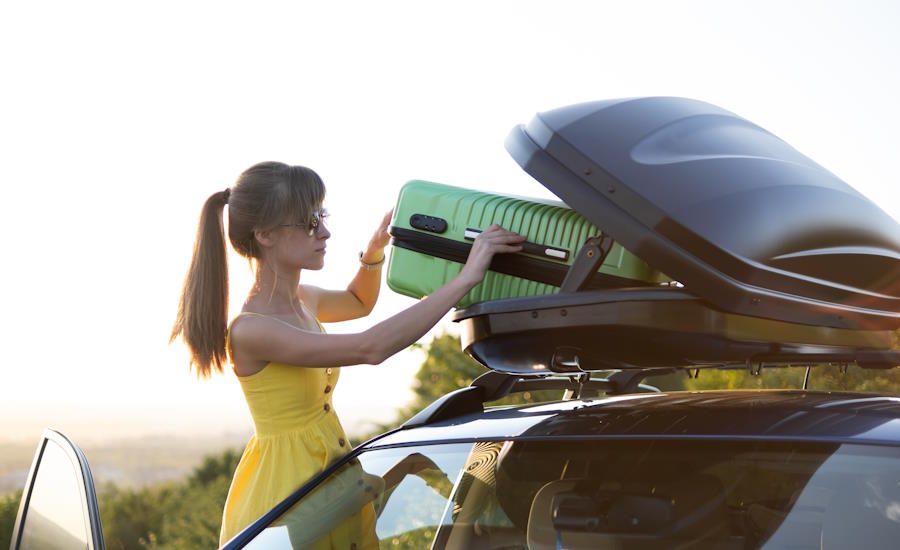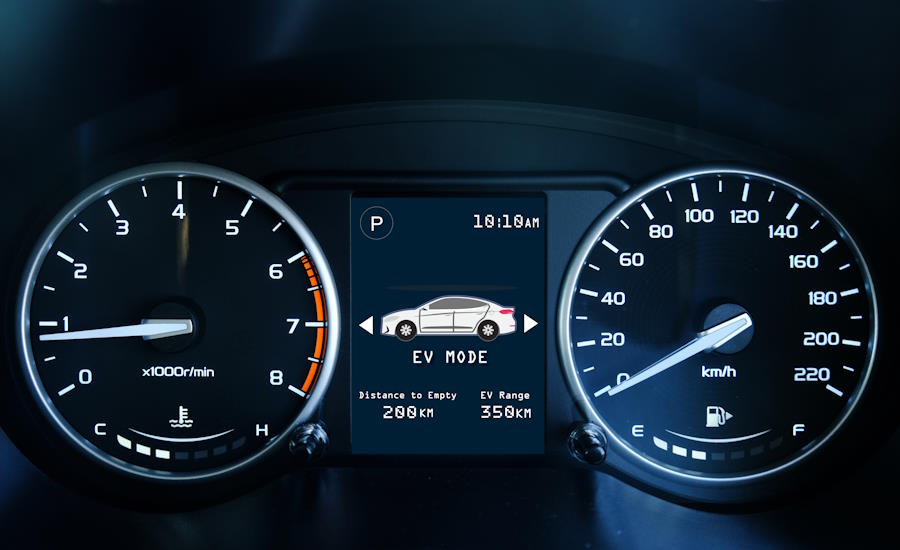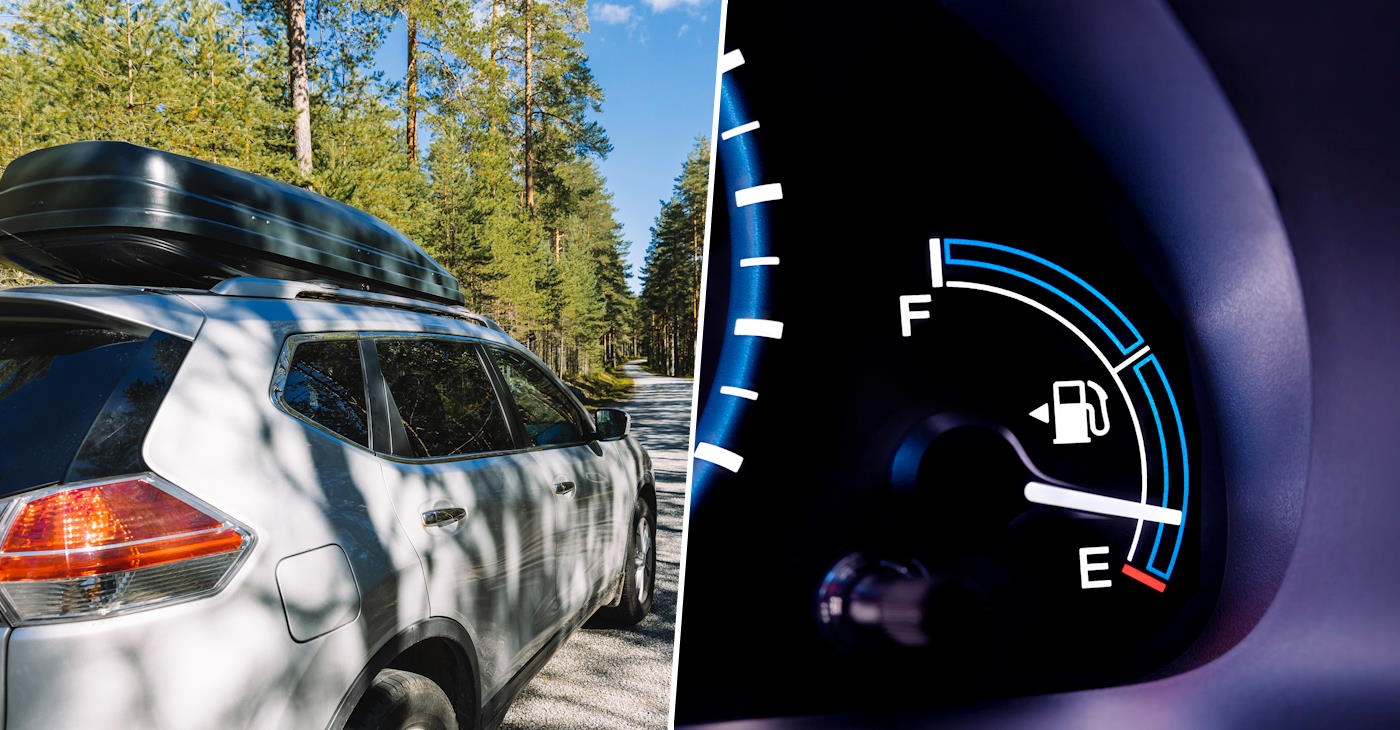All vehicles experience increased aerodynamic drag from any external object mounted on their roof, thereby reducing fuel efficiency or electric range. However, the degree of that impact can differ across vehicle types and powertrains. Gasoline and diesel cars (ICE vehicles) might see a more modest relative drop in miles per gallon (MPG) since they have significantly larger fuel reserves and a well-established fueling network. Electric vehicles, on the other hand, often feel the effects of drag more keenly in terms of miles per kilowatt-hour (kWh) and range limitations, particularly since aerodynamics plays a larger role when every unit of stored energy is critical for overall range. This article addresses how much a roof box can affect fuel consumption (MPG) or energy use (miles per kWh), explains what a roof box is, and discusses key factors such as aerodynamics, optimum driving speeds, and best practices.
What’s a roof box, you might ask?
A roof box is an enclosed cargo carrier designed to be mounted on the top of a vehicle, typically secured to a set of roof bars or a roof rack system. Constructed from durable materials like ABS plastic or lightweight composites, these containers provide extra cargo space without compromising interior seating. Their streamlined shape resembles an elongated capsule, intended to minimize drag as much as possible while protecting contents from weather and road debris. Yet, even with today’s aerodynamic designs, any object placed on top of a vehicle can influence airflow, thus impacting overall efficiency.
The many various use cases of roof boxes
Roof boxes serve a range of purposes, especially for those who need additional storage. Family vacations are a common use case; the vehicle’s trunk quickly fills up with luggage, outdoor gear, or baby equipment, leaving no space for items like skis or camping gear. Professionals in certain trades also rely on rooftop storage for transporting equipment without cluttering the passenger cabin. Furthermore, roof boxes offer a level of security and weatherproofing that simple roof baskets or open carriers may not provide, ensuring that sensitive cargo remains safe from the elements. Their compact footprint—occupying only the roof area—makes them particularly attractive for drivers who regularly haul extra items but still want to maintain passenger comfort.

Different kind of models
While “roof box” is the general term, there are indeed various designs and sizes on the market, to fit different vehicles and purposes:
Long, narrow boxes
Often used for skis or fishing rods. They minimize frontal area by keeping width small, but their length can extend over most of the vehicle’s roof.
Shorter, wider boxes
Popular with families transporting luggage or sports gear. They typically accommodate broader, bulkier items but may have a larger frontal cross-section.
Modular systems
Offer adjustable internal compartments or detachable segments. These can be more versatile for specific tasks.
Many modern roof boxes incorporate curved shapes, tapered edges, and smooth surfaces to reduce aerodynamic drag. Nonetheless, no matter how streamlined, a roof box still protrudes from the vehicle’s original shape, inevitably creating additional air resistance. Wind tunnel tests performed by automotive engineers and cargo box manufacturers typically show that even the most optimized designs introduce a measurable drag penalty.
Regardless of whatever roof box you may be looking for, you can be sure to find it at Calix Roof Boxes website! High quality products manufactured in Sweden.
Can a roof box be “too large”?
Size considerations are crucial when selecting a roof box. A box that is disproportionately large for a vehicle may catch more wind, leading to higher drag. Moreover, the added surface area and weight distribution on the roof can introduce stability issues or exacerbate crosswind sensitivity. There is also a practical dimension to consider: clearance under low bridges or within parking garages. From an aerodynamic perspective, a box that unnecessarily extends far beyond the windshield’s roofline or juts out over the vehicle’s rear can degrade airflow. Thus, choosing a box size commensurate with one’s cargo needs and the vehicle’s roof dimensions is advisable both for safety and for optimizing fuel or energy efficiency.
Does a roof box affect MPG and miles per kWh?
Studies and anecdotal reports suggest that a typical roof box can reduce a conventional vehicle’s fuel efficiency by anywhere from 5% to 15%, sometimes upto 25-30% even, depending on factors such as box size, shape, and driving speed. For electric vehicles, the reduction in miles per kWh can be in a similar range, but this tends to be more pronounced in real-world usage where EV drivers are often more sensitive to range impacts. The physical reason boils down to air resistance: an object mounted on top of the roof increases the frontal area and can disturb airflow, causing the powertrain—whether an internal combustion engine or an electric motor—to expend more energy overcoming drag.
The magnitude of drag added also depends on the box’s alignment. A well-fitting box contoured to follow the slope of the roof will produce less turbulence. Poorly secured or misaligned installations can generate greater drag due to uneven airflow around the edges. Additionally, driving in windy conditions can amplify the effect, as crosswinds interact with the box and produce turbulent airflow patterns.
Electric vehicles vs ICE vehicles – does it affect one more than the other?
In principle, the same aerodynamic laws apply to all vehicles. However, drivers of electric vehicles (EVs) often notice the effect more acutely because the energy storage in batteries is limited compared to the energy density of liquid fuels. Even a small reduction in energy efficiency can become more significant when you are trying to maximize driving range between charges. In addition, the rate of charge or the availability of charging infrastructure plays a role in the driver’s perception of range loss. An ICE (internal combustion engine) vehicle can refuel in minutes almost anywhere, whereas an EV might need to plan its charging stops carefully. Consequently, the same absolute reduction in efficiency can feel more critical to an EV user.

How much does a roof rack itself impact the fuel consumption?
Although often overlooked, even a basic roof rack without a box can affect efficiency and thus MPG or miles per kWh. The rack’s crossbars, brackets, and mounting points form protrusions along the vehicle’s roof, disturbing the airflow. Studies have shown that the mere presence of crossbars can reduce efficiency by a few percentage points, maybe 4-5% at most. Thus, a best practice is to remove the entire rack if it is not being used. For those who regularly haul cargo and need a permanent rack, choosing an aerodynamic rack design can minimize the penalty.
Driving fast with a roof box!
Most roof box manufacturers provide safety guidelines for maximum speed—commonly around 80 mph (130 km/h). Exceeding this speed can raise concerns about noise, vibration, and the structural integrity of the box under high wind load. From an energy efficiency standpoint, drag increases quadratically with speed, meaning every incremental increase in velocity imposes disproportionately greater aerodynamic resistance. Consequently, driving at moderate highway speeds, roughly in the 55–65 mph (90–105 km/h) range, is often considered optimal for balancing time savings and fuel or energy consumption. Industry professionals and academic studies alike show that at these speeds, the aerodynamic drag remains relatively manageable, preventing excessive strain on the powertrain.
While not in use – find a storage for the roof box
From both safety and efficiency perspectives, unmounting the roof box when it is not needed is strongly recommended. Even the most aerodynamic box can increase fuel consumption or energy usage if left on permanently. Furthermore, over extended periods, external environmental factors such as UV exposure and temperature fluctuations can degrade the box’s materials, shortening its lifespan. Unmounting and properly storing the box in a cool, sheltered place not only preserves its structural integrity but also restores the vehicle to its original aerodynamic form. In some jurisdictions, regulations or insurance guidelines may also require periodic checks of roof-mounted accessories for safety reasons, so removing the box when idle is both prudent and cost-effective.

Trivia: When was the first roof box invented?
Early forms of roof-mounted containers date back to the mid-20th century, evolving from metal trunks or suitcases strapped to the top of vehicles. Precise patent records shows, that by the 1950s, innovators were experimenting with enclosed rooftop cargo carriers for cars. However, the modern plastic roof box, often constructed from injection-molded polymers and featuring aerodynamic lines, emerged in the 1970s and gained widespread popularity in the 1980s. Advances in manufacturing techniques—like vacuum forming and later blow molding—allowed for lighter, stronger, and more streamlined designs. Over time, safety features such as lockable latches and secure clamping mechanisms became standard, making these boxes not only more user-friendly but also more robust against theft and poor weather conditions.
We summarize – roof box and how they affect MPG and miles per kWh
Roof boxes are indispensable for many motorists, expanding cargo capacity in a safe, weatherproof way. They come in varying designs to meet diverse storage needs, and thoughtful engineering has sought to reduce their aerodynamic drawbacks as much as possible. Nevertheless, the fundamental principles of fluid dynamics dictate that any external appendage on a vehicle will increase drag. This means that a roof box affect MPG (miles per gallon) for gasoline and diesel cars, as well as miles per kWh in electric vehicles. The impact is broadly similar in physical terms, yet it can feel more pronounced in EVs, where range is inherently a more delicate resource. Optimal driving speeds are lower rather than higher if one aims to minimize the penalties, and it is good practice to remove the roof box when not in use. Since their inception in the mid-20th century and their surge in popularity over the decades, roof boxes have undergone major refinements in materials and design. Still, the fundamental trade-off between utility and efficiency remains, making careful consideration of size, shape, and usage habits the key to balancing convenience with sustainability.
What would you like to read about in our upcoming news articles? Do not hesitate to send some tips, contact us and maybe we’ll choose your suggested topic here next! Welcome!

